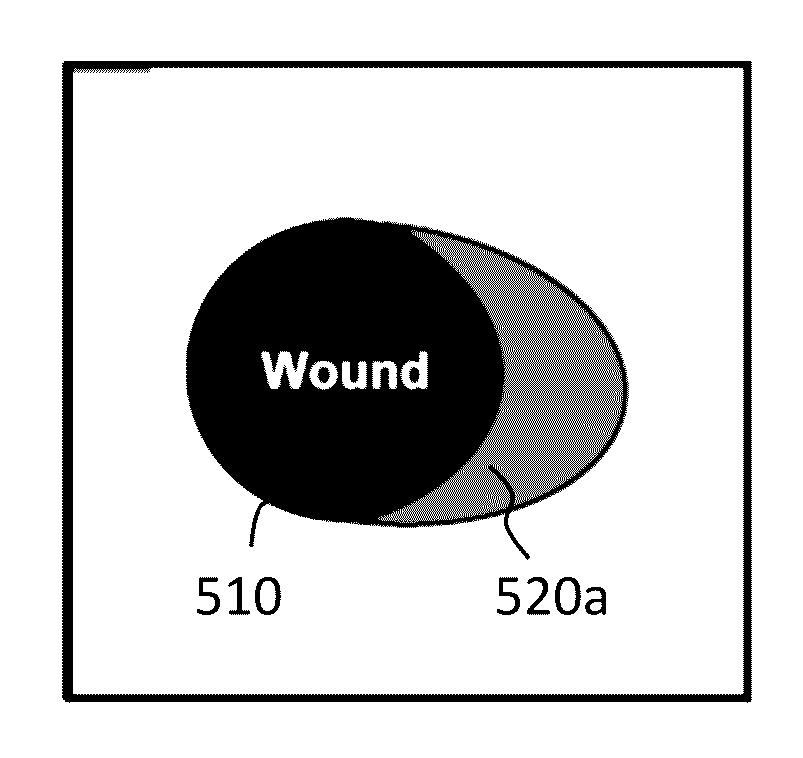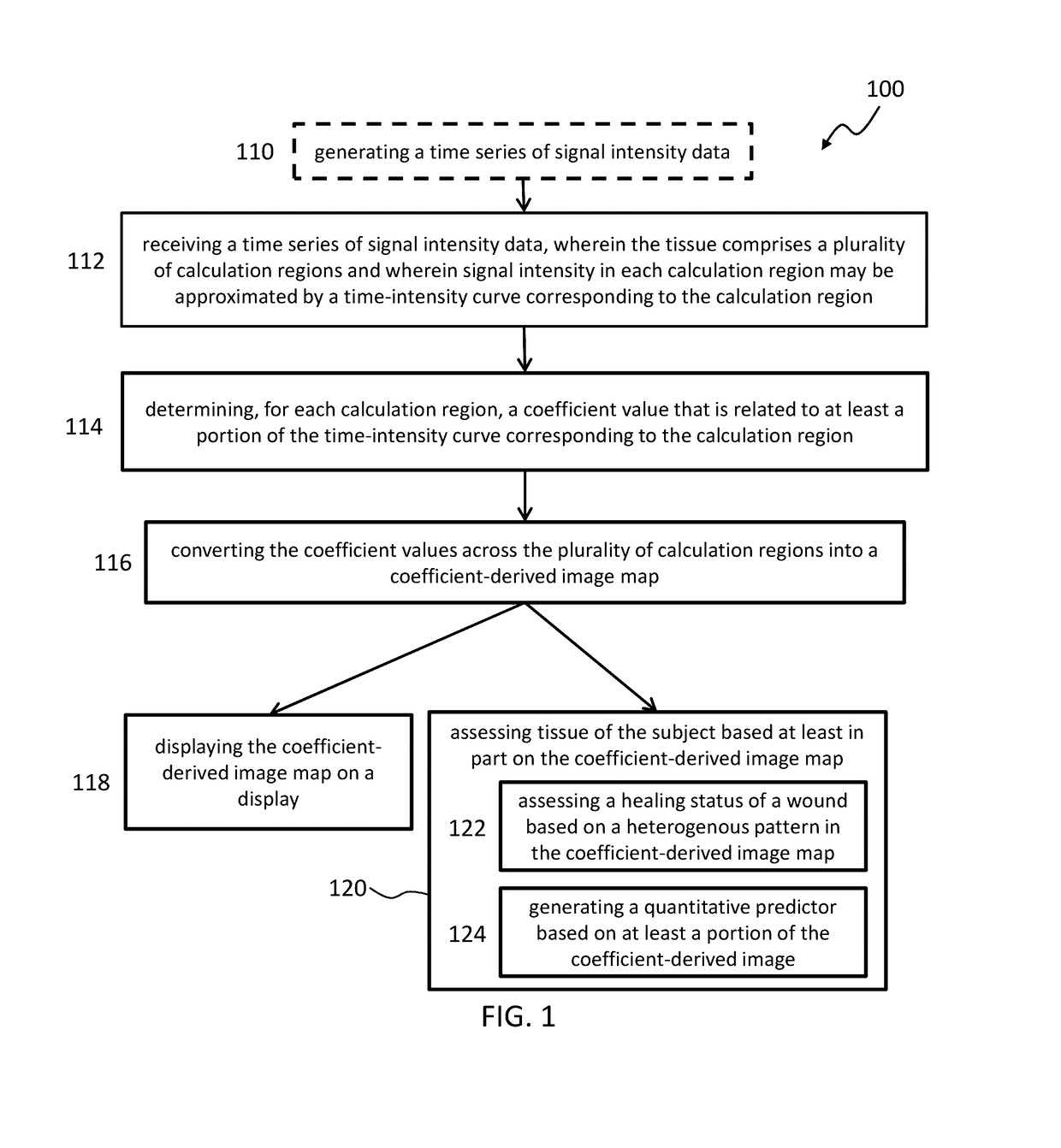Methods and systems for assessing healing of tissue
a tissue and healing technology, applied in the field of methods and systems for assessing tissue healing, can solve the problems of insufficient qualitative visual evaluation of such images, adverse effects of poor tissue perfusion on the healing process of tissue, and insufficient visual evaluation
- Summary
- Abstract
- Description
- Claims
- Application Information
AI Technical Summary
Benefits of technology
Problems solved by technology
Method used
Image
Examples
example 1
No Wound
[0107]Results were obtained for a control animal that did not develop any wound after removal of the magnetic plates described above. FIGS. 9A-9D illustrate results for the control animal after 24 hours following removal of the magnetic plates, while FIGS. 10A-10D illustrate results for the control animal after 48 hours following removal of the magnetic plates. The color images (FIGS. 9A and 10A), maximum intensity images (FIGS. 9B and 10B), arterial coefficient-derived images (FIGS. 9C and 10C), and venous coefficient-derived images (FIGS. 9D and 10D) do not depict any visible abnormalities.
example 2
Minor Pressure-Induced Wound
[0108]Results were obtained for an animal with a minor pressure-induced wound resulting from application of the magnetic plates described above. The results in FIGS. 11-13 illustrate the healing progression of the minor pressure-induced wound, which healed almost completely without intervention after about 48 h, as depicted in a series of color images, maximum perfusion images, arterial coefficient-derived images, and venous coefficient-derived images. In particular, FIGS. 11A-11D illustrate results for the animal with the minor wound after 3 hours following removal of the magnetic plates, FIGS. 12A-12D illustrate results for the animal with the minor wound after 24 hours following removal of the magnetic plates, and FIGS. 13A-13D illustrate results for the animal with the minor wound after 48 hours following removal of the magnetic plates.
[0109]After 3 hours, as shown in the color image of FIG. 11A, visible redness on the skin surface of the animal can b...
example 3
Severe Pressure-Induced Wound
[0112]Results were obtained for an animal with a severe pressure-induced wound resulting from application of the magnetic plates described above. The results in FIGS. 14-19 illustrate the healing progression of the severe pressure-induced wound as depicted in a series of color images, maximum perfusion images, arterial coefficient-derived images, and venous coefficient-derived images. In particular, FIGS. 14A-14D illustrate results for the animal with the severe wound immediately following removal of the magnetic plates, FIGS. 15A-15D illustrate results for the animal with the severe wound after 2 hours following removal of the magnetic plates, FIGS. 16A-16D illustrate results for the animal with the severe wound after 24 hours following removal of the magnetic plates, FIGS. 17A-17D illustrate results for the animal with the severe wound after 48 hours following removal of the magnetic plates, FIGS. 18A-18D illustrate results for the animal with the seve...
PUM
 Login to View More
Login to View More Abstract
Description
Claims
Application Information
 Login to View More
Login to View More - R&D
- Intellectual Property
- Life Sciences
- Materials
- Tech Scout
- Unparalleled Data Quality
- Higher Quality Content
- 60% Fewer Hallucinations
Browse by: Latest US Patents, China's latest patents, Technical Efficacy Thesaurus, Application Domain, Technology Topic, Popular Technical Reports.
© 2025 PatSnap. All rights reserved.Legal|Privacy policy|Modern Slavery Act Transparency Statement|Sitemap|About US| Contact US: help@patsnap.com



